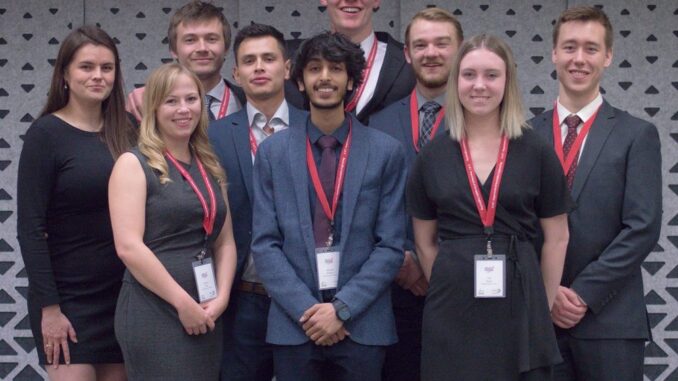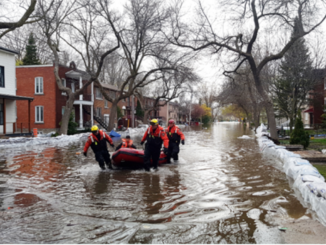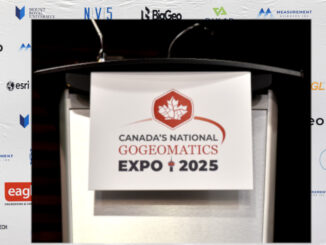
The second ever National Geomatics Competition (NGC) was hosted by the University of Calgary (UofC) in February this year, and it was an enormous success! Geomatics Undergraduate students from across Canada convened in the new SSE Canadian Natural Resources Limited Engineering complex at U of C to compete in a consulting-style competition that would test their geomatics problem-solving along with their intuition to come up with a solution to a real-world problem.
After the success of the inaugural competition hosted in Fredericton, New Brunswick in 2018, the Organizing Committee for this year’s event in Calgary were excited to continue that success and enable the competition to progress into a well-defined and annual event. The NGC Organizing Committee this year was made up of 9 University of Calgary’s Geomatics Engineering students. For nearly 12 months, they volunteered their time to organize the logistics of hosting such a large event. This hard work and dedication manifested in a well-organized 4-day event that went off without a hitch. 
This year, 12 teams from 7 schools across the country converged on the U of C for the 2019 NGC, as Université Laval joined in the festivities along with the original six schools from last year: University of Calgary, University of New Brunswick, University of Waterloo, York University, Southern Alberta Institute of Technology and the British Columbia Institute of Technology. Each school produced 1 or 2 teams of 3 students each, making a field of 36 competitors in all. All of the competitors were incredibly enthusiastic and dedicated to their work, which made for some difficult decisions during judging deliberations, as the competition was so strong across the board.
The teams this year were tasked with coming up with a solution to a current real-world problem: the displacement crisis in Columbia. Colombia currently is faced with the highest number of internally displaced persons (IDPs) in the world (approx. 7.5 million). Many of them have been forced out of their farm-land, relocating to informal settlements on the outskirts of the country’s major towns and cities. This uncontrolled burst of migration to urban areas has resulted in poor living conditions, high unemployment rates, a deflating agricultural economy, and a loss of security among the displaced.
The delegate teams were given 6 hours to come up with their best innovative solution to the problem, and come up with a plan on how best to present their solution to the judges.

The seven judges comprised entirely of industry members from the Platinum event sponsors (NovAtel, Trimble, WSP, Stantec, McElhanney Surveying and Mapping, ChallengerGeomatics Ltd, and Professional Sur- veyors Canada) watched all 12 presentations, using a marking rubric from the NGC committee. Each delegate team had only 15 minutes to present their solution and pitch to the panel of judges why their solution was the best one.
After all the presentations were judged, the judges deliberated on the outcome and after an hour of deliberation, they came to their conclusion.




Be the first to comment